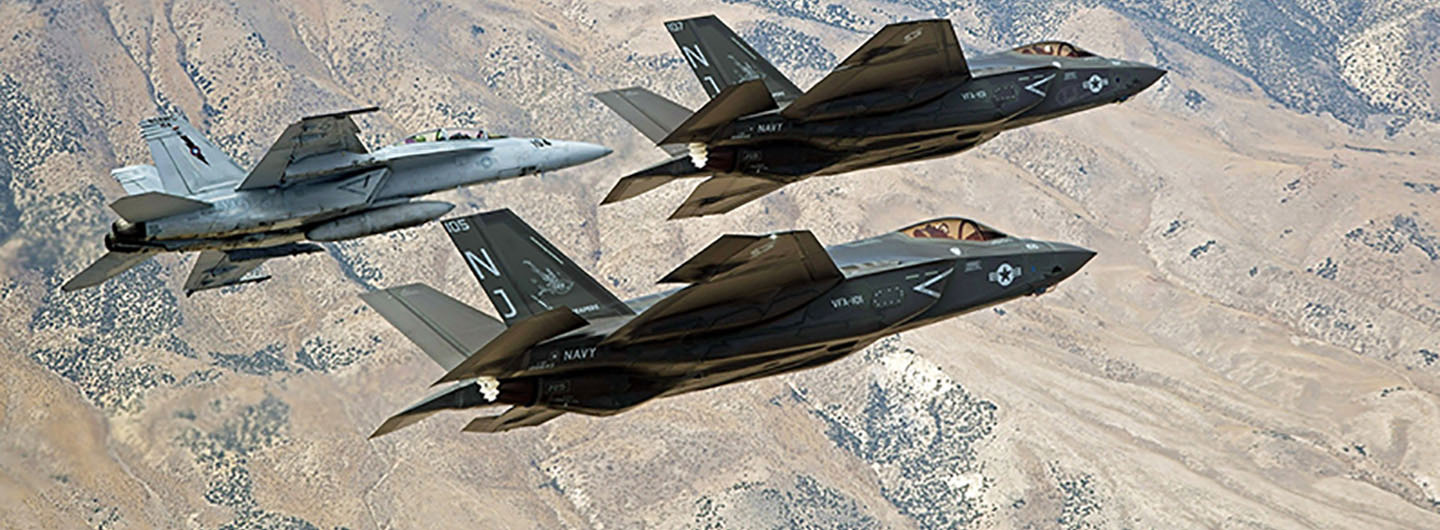"Deterrence is the art of producing in the mind of the enemy,
the fear to attack"-Dr. Strangelove
Cross-Domain Deterrence (CDD)...
...is the use of capabilities of one type to counter threats or combinations of threats of another type in order to prevent unacceptable attacks. Examples might include using air power to retaliate for terrorism or cyber disruption of military command and control.
CDD is not a new problem—actors have long combined disparate means to pursue political goals or evade their opponents’ deterrent threats—but the complexity of CDD in the contemporary world makes understanding it more important than ever.
The importance of cross-domain deterrence research
The emergence of new military technology, such as cyber warfare or anti-satellite and space-based weapons, and the interdependence of threat technology with civilian infrastructure, creates major challenges for conventional frameworks for deterrence.
A wide range of political actors, from rising powers like China to regional spoilers like Russia and Iran and even non-state actors, now seek to leverage emerging threat capabilities for advantage against powerful actors like the United States, which in turn look to exploit the same technologies to safeguard their interests.
While strategic actors have employed a variety of means such as naval and land forces to pursue coercive objectives since antiquity, the rise of threats to space and cyber infrastructure makes deterrence particularly challenging for policymakers and theorists today.
Non-military coercive options such as economic sanctions or population flows, as well as the growing influence of non-state actors in global politics, further complicate the strategic calculus.
Cross-Domain Deterrence: Strategy in an Era of Complexity
Erik Gartzke and Jon R. Lindsay’s edited volume available now.
How wars in Iraq and Afghanistan contributed to today’s deteriorating civil-military relations
cPASS Director Erik Gartzke authored an Orange County Register article on the history of wars in Iraq and Afghanistan's contributions to today's civil-military relations.
The Influence of Seapower on Politics: Domain- and Platform-Specific Attributes of Material Capabilities
This paper, written by Erik Gartzke and Jon R. Lindsay, argues that the characteristics of naval power offer distinctive tradeoffs in terms of the causes of war. Naval presence, firepower, and mobility enable naval nations to fight farther from home and obtain more diplomatic recognition. At the same time, mobility and stealth introduce ambiguity about national priorities and contribute to errors in assessing the local balance of power and resolve.
Distribution of Military Capabilities (rDMC) Dataset
This article written by Andres Gannon introduces the Distribution of Military Capabilities (rDMC) dataset. It begins by explaining the value of collecting data on disaggregated national military capabilities, its scope, and the data collection process. I then identify some initial trends about changes in the distribution of military capabilities across states from 1970 -- 2014. I conclude by identifying future research use of the data as both a dependent and independent variable.
Hassling: How States Prevent a Preventive War
Low‐level military operations outside of war are pervasive in the international system. These activities have been viewed as destabilizing by both academics and policy makers, as miscalculations or missteps in conducting low‐level operations can risk escalation to war. Peter Schram shows the opposite can be true: these operations can prevent escalation to a greater war. He examines a type of low‐level conflict that I call “hassling” in the common framework of bargaining and war. The critical feature of hassling is that it weakens a targeted state. He finds that when a rising power rules out peaceful bargains, hassling the rising power can prevent a preventive war, with efficiency gains for the involved states.


